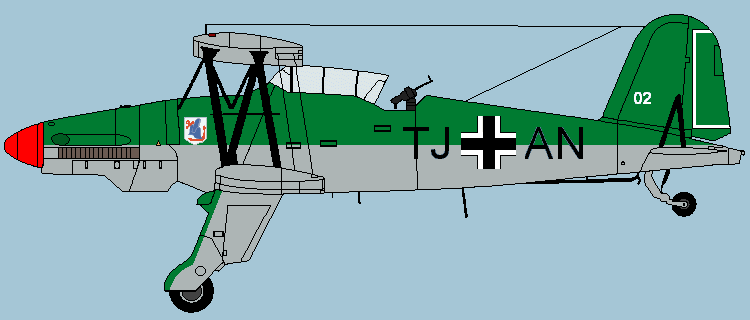The Fieseler Fi 167 was designed as the prime torpedo and reconnaissance bomber for German aircraft carriers. With the beginning of the construction of the Graf Zeppelin in 1937, two aircraft producers, Fieseler and Arado, were ordered to produce prototypes for a carrier based torpedo bomber. By summer of 1938 the Fiesler design proved to be superior to the Arado design, the Ar195.
Like the famous Fieseler Fi 156 Storch, the Fi 167 had surprising slow speed capabilities, the plane would be able to land almost vertically on a moving aircraft carrier.
After two prototypes (Fi 167 V1 & Fi 167 V2), twelve pre production models (Fi 167A-0) were build which only had slight modifications to the prototypes. The aircraft exceeded all requirements by far, and had excellent handling capabilities and could carry about twice the required weapons payload.
Since the Graf Zeppelin was not expected to be completed before the end of 1940, the construction of the Fi 167 only had a low priority. When the construction of the Graf Zeppelin was stopped in 1940, the completion of further aircraft was stopped and the existing ones were taken into Luftwaffe service in the "Erprobungsgruppe 167".
After the construction of the CV Graf Zeppelin was continued in 1942 the Junkers Ju 87 C took over the role as an reconnaissance bomber and torpedo bombers weren't seen to be needed anymore. Nine of the exisiting Fi 167 were send to a coastal naval squadron in the Netherlands and returned to Germany in summer of 1943. After that they were sold to Romania. The remaining planes were used in the "Deutsche Versuchsanstalt für Luftfahrt" (German Aircraft Experimental Institute) in Budweis, Czechia for testing several different landing gear configurations. None of this aircraft still exists today
|


